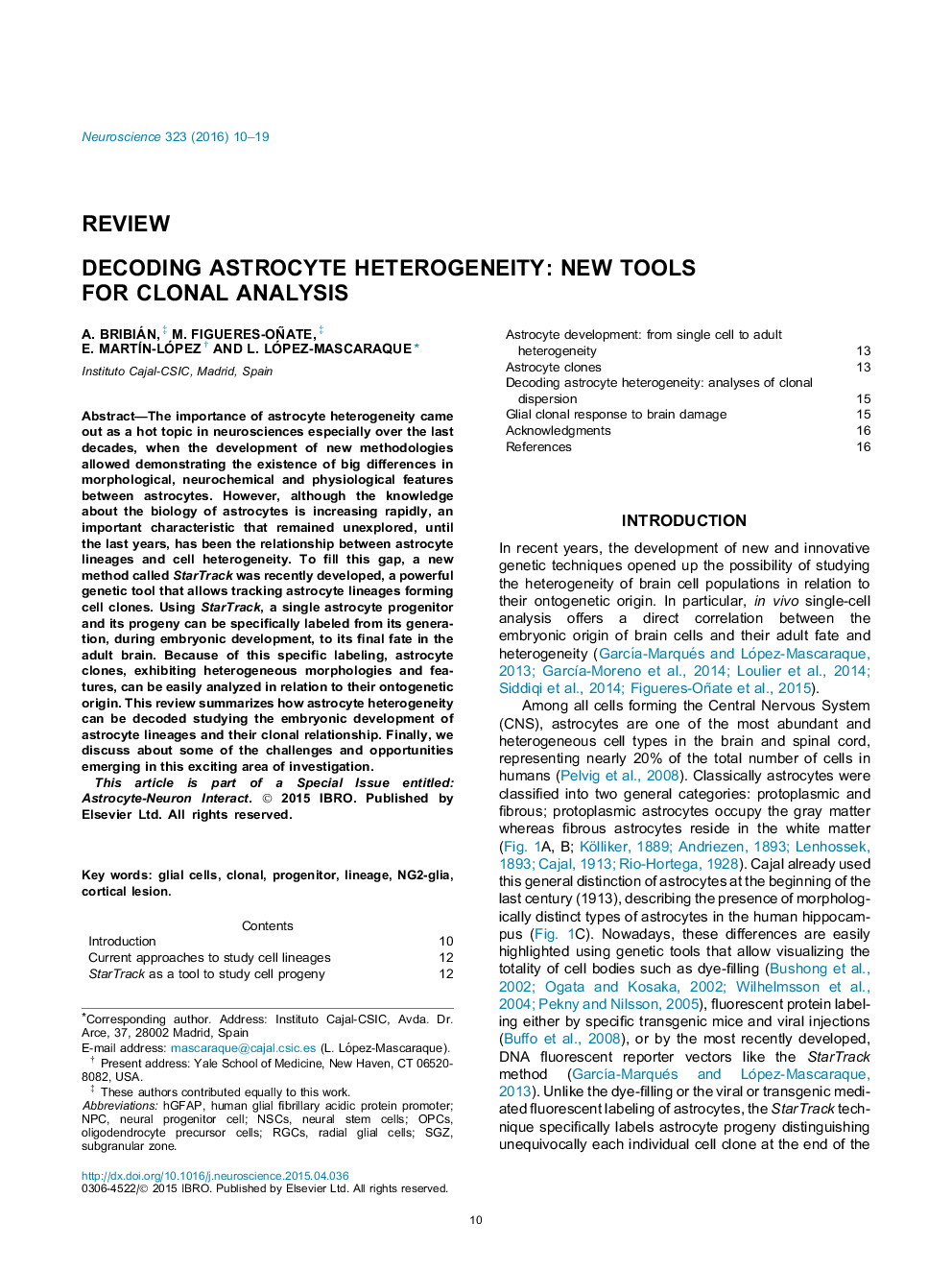| کد مقاله | کد نشریه | سال انتشار | مقاله انگلیسی | نسخه تمام متن |
|---|---|---|---|---|
| 6271077 | 1614753 | 2016 | 10 صفحه PDF | دانلود رایگان |

- Astrocyte heterogeneity is related to clonal diversity.
- Different classes of astrocytes emerge from different lineages.
- The presence of micro-domains composed of clonally related astrocytes is described.
- Single-cell fate in vivo analyses provides a direct correlation between ontogenic origin and functionality.
The importance of astrocyte heterogeneity came out as a hot topic in neurosciences especially over the last decades, when the development of new methodologies allowed demonstrating the existence of big differences in morphological, neurochemical and physiological features between astrocytes. However, although the knowledge about the biology of astrocytes is increasing rapidly, an important characteristic that remained unexplored, until the last years, has been the relationship between astrocyte lineages and cell heterogeneity. To fill this gap, a new method called StarTrack was recently developed, a powerful genetic tool that allows tracking astrocyte lineages forming cell clones. Using StarTrack, a single astrocyte progenitor and its progeny can be specifically labeled from its generation, during embryonic development, to its final fate in the adult brain. Because of this specific labeling, astrocyte clones, exhibiting heterogeneous morphologies and features, can be easily analyzed in relation to their ontogenetic origin. This review summarizes how astrocyte heterogeneity can be decoded studying the embryonic development of astrocyte lineages and their clonal relationship. Finally, we discuss about some of the challenges and opportunities emerging in this exciting area of investigation.
Journal: Neuroscience - Volume 323, 26 May 2016, Pages 10-19